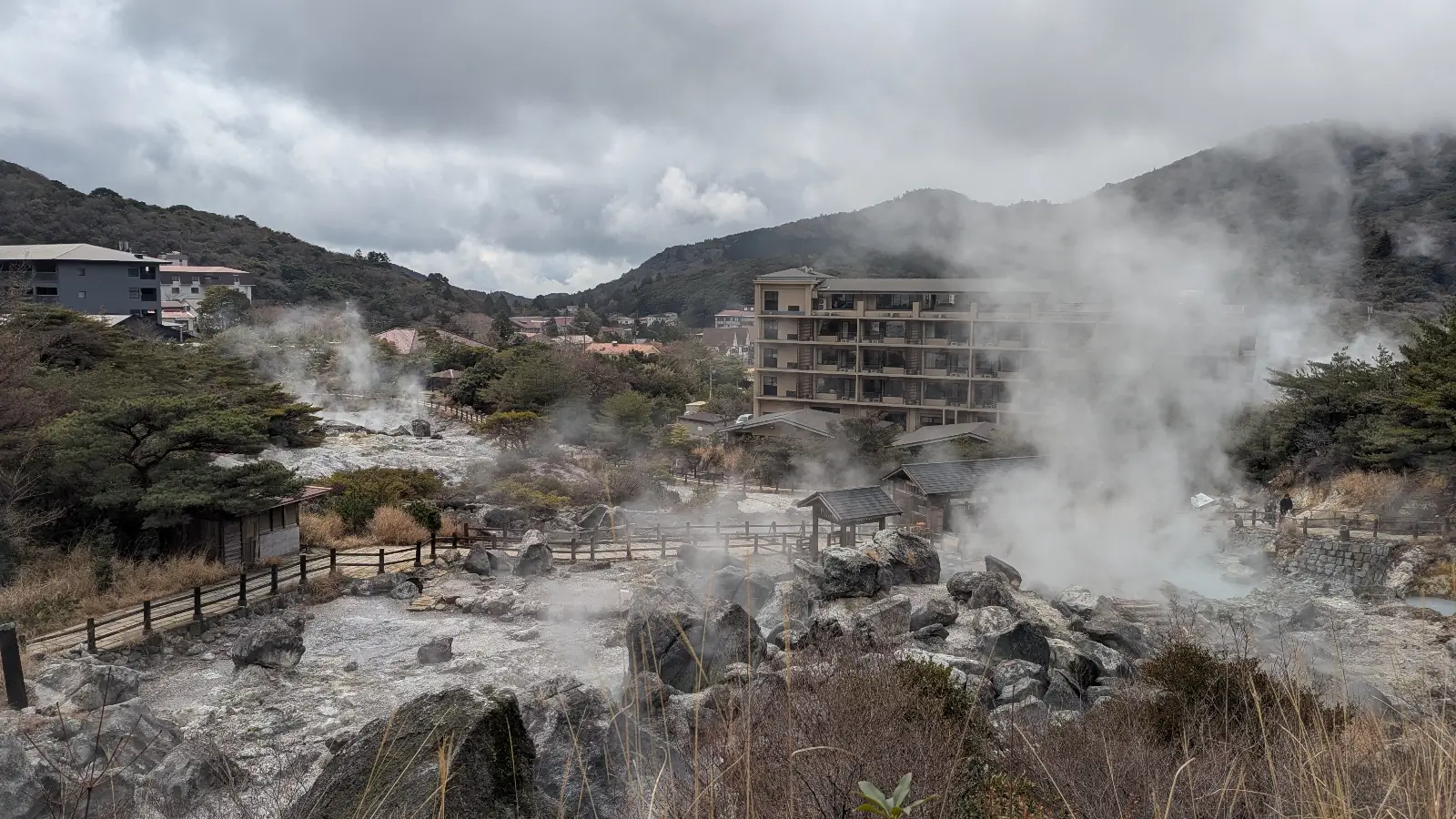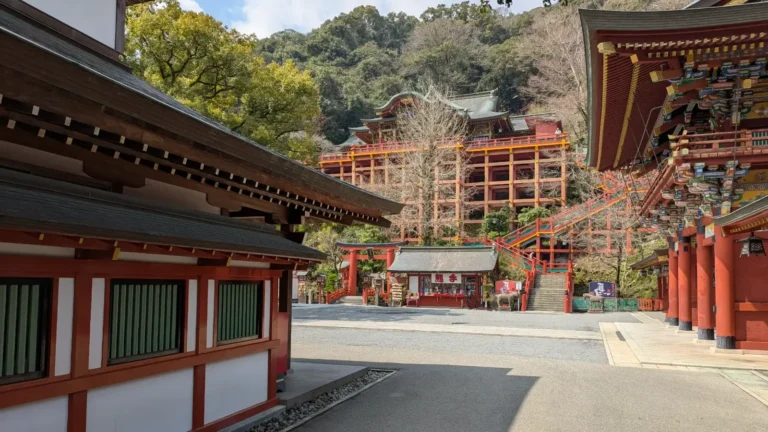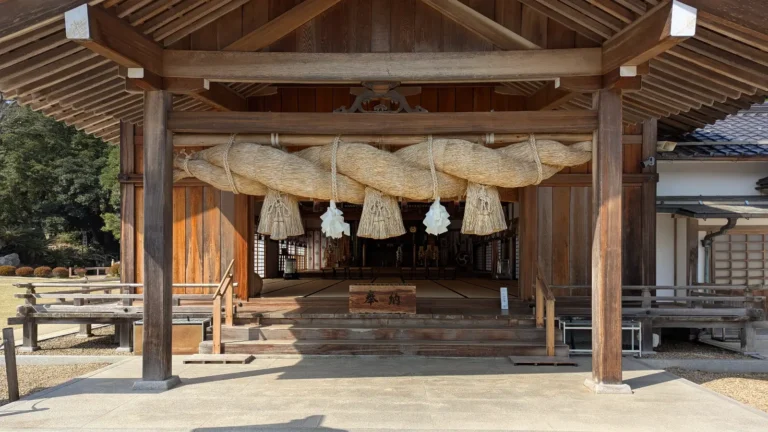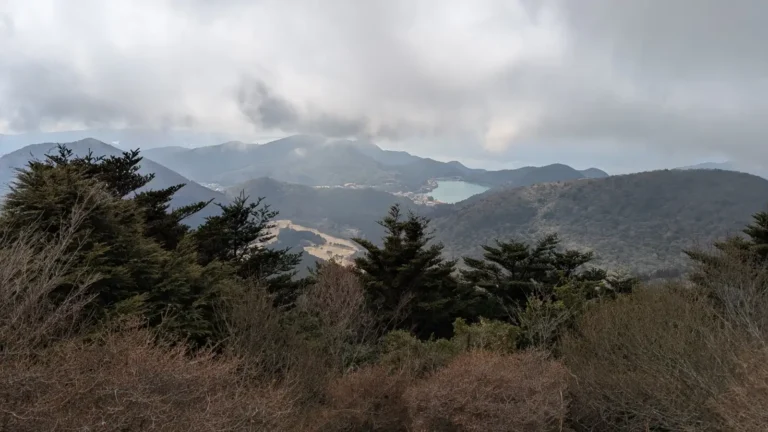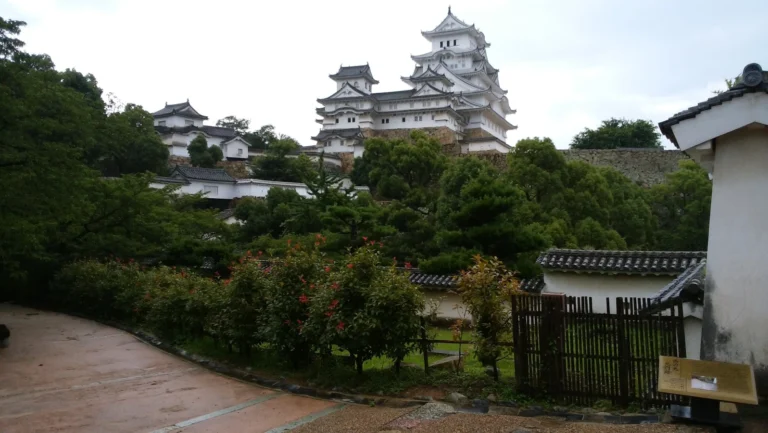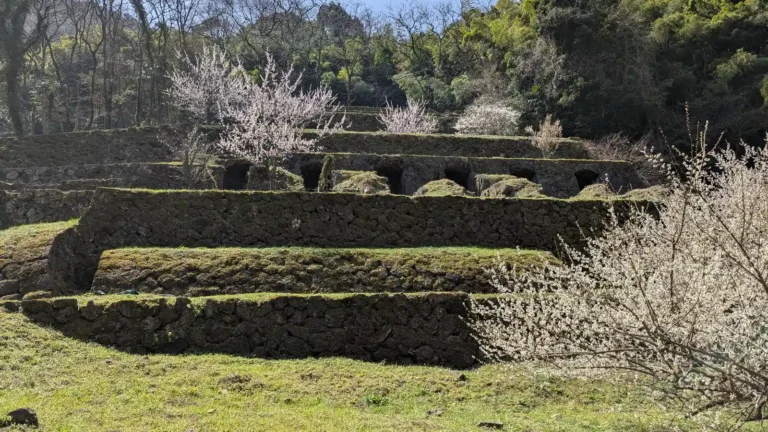Unzen Onsen: A JOTM Guide
The first thing you notice at Unzen Onsen (雲仙温泉) isn’t the steam rising from the stone vents, it’s the stillness. A quiet so deep it hums, broken only by the distant call of a warbler and the slow drift of sulfuric clouds curling past moss-darkened eaves. Tucked high in the mountains of Nagasaki, this timeless hot spring town doesn’t announce itself, Unzen waits. Long before bathing became leisure, these volcanic paths were walked by pilgrims and monks seeking clarity in the mist. Today, the same hush lingers around every bend, whether you’re soaking in a Nagasaki hillside ryokan, following the scent of minerals through the Jigoku, or simply surrendering to the quiet pulse that defines Unzen Onsen.
Select links in this guide are affiliate links. They help sustain this space… allowing us to share more, with less dependence on advertising.
*Prices are subject to change.
Unzen Onsen at a Glance: Overview & Quick Facts
- Region: Kyushu (Nagasaki Prefecture)
- Nearest City: Nagasaki City
- Type of Site: Historic Onsen Town and Volcanic Geothermal Site
- Best Season to Visit:
- Spring (March–May): Camellia bloom trails and gentle warmth
- Summer (June–August): Misty mornings and mountain quiet
- Autumn (October–November): Fiery foliage along silent trails
- Winter (December–February): Snow-dusted pines and steaming stone paths
Why It’s Special in One Sentence
Unzen Onsen is Japan’s original national park retreat, where geothermal forces and mountain quietude merge into a timeless escape.
Why Unzen Onsen Is Worth Discovering: Highlights of Unzen Onsen’s Sacred Atmosphere
- Unzen’s roots trace back to its role as a monastic training ground, where ascetics sought solitude and spiritual discipline in the heart of the mountains.
- The name “Unzen Jigoku” refers to the boiling sulfur vents, once feared as portals to hell, now revered for their natural beauty and geothermal intensity.
- It became Japan’s first designated national park in 1934, a Meiji-era haven for diplomats, writers, and travelers seeking both healing and poetic isolation.
- In winter, steam from the hot springs mingles with snowfall, creating a surreal and quiet landscape where the boundaries between elements seem to dissolve.
- Moments of stillness linger along the narrow stone paths and forest trails, making it a place to pause, not just pass through.
- What sets Unzen apart isn’t just its volcanic drama, but how it transforms that intensity into calm, reminding travelers that nature’s power can also be peace.
For those drawn to this kind of elemental quiet, you might also explore the surrounding landscapes in Unzen-Amakusa National Park or wander further through Kyushu’s still heartlands in our Saga Journey.
Must-See Wonders at Unzen Onsen: Jigoku Walks, Ropeway & Trail Highlights
The Jigoku Walks
- A network of geothermal trails that weave through sulfur vents, boiling mud, and steaming stone
- Known as “Unzen Hell,” yet strangely serene when walked in silence or at dawn
- Wooden paths and footbridges guide you through mist that smells faintly of minerals and myth
Unzen Ropeway to Mt. Myoken
- A short aerial journey offering sweeping views of the Shimabara Peninsula and caldera rim
- The observation platform reveals mountain layers that shift in tone with the time of day
- Especially breathtaking in autumn, when the forests burn gold and crimson
Kyushu Nature Trail Sections
- Connects with pilgrimage routes that once linked remote temples and training sites
- Trails wind through old-growth cedar forests and volcanic ridgelines
- Often empty, inviting deep reflection and slow, attentive walking
Historic Ryokan Architecture
- Elegant wooden inns dating back to the Meiji and Taisho eras still line the narrow lanes
- Many offer public footbaths or tea for non-staying guests, ideal for a quiet pause
- Interiors blend shoji light, tatami calm, and understated hospitality
Onsen Experiences Under Open Sky
- Outdoor baths (rotenburo) set against pine forests or beside steam vents offer elemental immersion
- Waters are naturally acidic, said to soften skin and ease fatigue
- Best experienced in winter or misty rain, when earth and sky feel closest
Local Secrets from JOTM: Hidden Tips for Visiting Unzen Onsen
- Arrive Just After Sunrise: Let the first steam of the day rise with you. The Jigoku paths are quiet then, and the mist glows like silk against the trees.
- Listen for the Hidden Bell: Near the Jigoku fields is a small wooden temple. If you hear a faint chime, follow it, it’s rung by pilgrims who still leave prayers here.
- Time It for Camellia Season (Late Winter–Early Spring): The trails are lined with soft red petals in February and March, a subtle signal that winter’s grip is loosening.
- Take the Old Pilgrimage Path: Skip the main road and follow the wooded route from Unzen’s outer edge. It adds time, but it feels like stepping into a different century.
- Soak Twice, Once Alone: Your first bath is for your body. Your second, later in the evening, is for your mind. Return when the steam has deepened and the stars are out.
Nearby Sacred Spaces: Towns & Castles Near Unzen Onsen You Shouldn’t Miss
- Obama Onsen – Coastal hot spring town with steamy footbaths and ocean sunsets (30 minutes by bus)
- Nita Pass – Scenic mountain pass with panoramic views of Mount Fugen and the caldera (20 minutes by car)
- Shimabara Castle – Peaceful reconstructed fortress with gardens and local exhibits (45 minutes by car)
Getting to Unzen Onsen: How to Access by Foot, Bus, or Train
- By Bus: From Isahaya Station (JR), take the Shimabara Railway Bus to Unzen Onsen (approx. 80 mins).
- By Train: From Nagasaki, transfer via JR Nagasaki Line to Isahaya, then follow bus route above.
- By Car: A scenic drive along the coast or up through forested switchbacks if coming from the Shimabara side.
- Hours: The town is always open, but onsen ryokan usually operate from 3:00 PM to 10:00 AM for overnight stays. Day-use baths vary.
- Cost: Walking the Jigoku paths is free. Onsen day-use ranges from ¥ to ¥¥ depending on the ryokan.
For travelers using the Japan Rail Pass, portions of this route may be covered, our guide offers practical insights on when it’s worth considering.
Resting Nearby: Hotels Near Unzen Onsen
- Unzen Kyushu Hotel – Minimalist interiors, private baths, and large windows that frame the Jigoku steam like a living painting.
- Hoshino Resorts KAI Unzen – Serene and spacious, with garden views, seasonal kaiseki, and onsen nestled beside the steam vents.
- Unzen Miyazaki Ryokan – Modern luxury with open-air baths and floor-to-ceiling views of the volcanic landscape.
- Azumaen – Set beside a tranquil lake, this long-loved ryokan offers garden-facing baths and tatami rooms that invite unhurried reflection.
If you’re planning a broader journey through Japan, our foundational guides offer clarity for every step of the way. Explore Planning a Trip to Japan: A JOTM Guide, learn How to Get Around Japan, and find the Best Time to Visit Japan for a season that resonates with your rhythm.
FAQs and Travel Tips about Unzen Onsen: A Few Last Things Before You Go
If you’re planning your own visit to Unzen Onsen, here are some of the most common questions travelers ask, from getting there and seasonal tips to which ryokan and hot springs offer the most memorable experience.
A: Most shops, cafes, and bathhouses in Unzen Onsen generally operate until around 5:00 PM. The Unzen Onsen area itself is always accessible for exploration.
A: The best times to visit are late October to early November for autumn leaves or January to February for snowy hot spring views.
A: A stay of one to two nights is ideal to fully experience Unzen Onsen, including the onsen baths, Jigoku trails, and ropeway.
A: Unzen Onsen is in Nagasaki Prefecture’s mountains, within Unzen-Amakusa National Park, about 1.5 hours from Nagasaki City by car or bus.
A: Unzen Onsen is known for its sulfuric steam vents (Unzen Jigoku), rich samurai and Christian history, and its legacy as Japan’s first national park.
A: The most common way to reach Unzen Jigoku is by taking a bus from Isahaya Station directly to the Unzen Onsen bus stop, from which the Jigoku steam fields are a short walk.
A: Walk the steaming Jigoku trails, soak in hot spring baths, take the Unzen Ropeway, and explore mountain paths or historic ryokan.
A: Top options include Hoshino Resorts KAI Unzen, Unzen Kyushu Hotel, and Unzen Miyazaki Ryokan for their views, design, and rotenburo.
A: Unzen Jigoku, or “Unzen Hell,” is a geothermal area with steaming vents, boiling pools, and sulfur clouds, once used for religious ascetic training.
A: Yes, Unzen offers a rare mix of natural wonder, cultural depth, and stillness, perfect for travelers seeking a quiet, meaningful retreat.
A: Yes, Unzen Onsen can be enjoyed as a day trip. Many bathhouses offer day-use options, and you can still explore Unzen Jigoku and the town’s attractions even without an overnight stay.
A: Unzen Onsen’s waters are highly acidic and sulfuric, known for their skin-beautifying properties and believed to be effective for various skin conditions, chronic rheumatism, and neuralgia.

